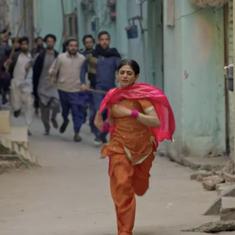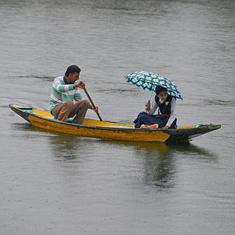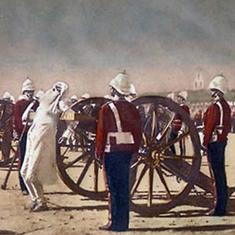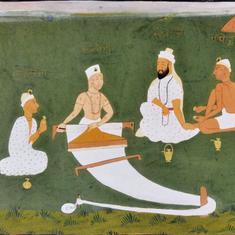There’s a bit of irony in the fact that a country which conducts the world’s richest cricket league hasn’t been able to send an umpire to the Elite Panel for over ten years. And before you climb on to the old bogey of Western bias, it’s a good idea to have a look at the composition of the Elite Panel since 2002 when it was first constituted.
While the Elite Panel has seen sizeable representation from Australia and England, it doesn’t mean that other countries have been sidetracked. From the subcontinent itself, Pakistan have Aleem Dar, one of the most respected umpires in international cricket and previously had Asad Rauf, before he was dropped from the panel in 2013. Sri Lanka also have a substantial voice in the panel, previously represented by Asoka De Silva and now Kumar Dharmasena. In fact, even Russell Tiffin of Zimbabwe had a place in the panel for two years, between 2002 and 2004.
An amateur system
Perhaps it has something to do with how umpiring in India has generally been looked at. As Venkatraman Ramnarayan, a former Hyderabad off-spinner who was among the Indian probables for a tour in Australia in 1977-'78, put it, “In my days, the umpiring was completely amateurish. But you couldn’t blame them. They were doing it for the love of the game...there was no money, no training involved.”
It seems clear that umpiring standards in India weren’t given a great deal of importance. While other countries such as England and Australia undertook programmes to improve umpiring standards, realising that this would lead to an overall improvement in the standard of the game in their respective countries, India lagged behind without a care. But with the entry of S. Ravi into the Panel, it seems there’s finally been a focus on raising umpiring levels in the country.
“Venkataraghavan was probably the torch-bearer," said Ramnarayan. “Before him, no former cricket would want to get into umpiring – they had better, well-paid options available. But Venkat showed the way forward...”
Improvements in recent times
Simon Taufel, widely considered one of cricket’s best umpires is currently employed as a mentor to the Board of Control of Cricket in India’s Elite Panel of umpires. In an interview to ESPNCricinfo, he noted that there had been’ tremendous progression’ in the standard of Indian umpiring.
But this change hasn’t come of all a sudden. According to Subrata Banerjee, former international umpire and head of the Cricket Association of Bengal’s Umpiring Committee, this change arrived after the BCCI completely overhauled the system of umpiring training in 2006.
“In 2006, the BCCI inked an agreement with Cricket Australia which completely overhauled the standards of umpiring in India,” he said. “Before this, the system lacked structure…there was no hierarchy.
How did this agreement help? “Well, earlier the BCCI would only focus on captain’s reports to judge umpiring performances. But now the focus has shifted to Umpiring Educators, “ he pointed out. “All umpires in BCCI tournaments were put into different levels, i.e. Level 1, Level 2, Level 3. Umpiring educators would look over umpires in every match and monitor their performances. “
Another big breakthrough came when it was decided that all domestic matches would be video-recorded. According to Banerjee, “This brought transparency. The evidence was up there for anyone to check. Umpires could not get away from their mistakes. The video evidence used to be closely examined by the Umpires Panel. The BCCI also constituted a Review Committee who would check these tapes at random.”
“You don’t see the results instantly”, chipped in Ramnarayan. “Once these reforms started, it requires time to reap the benefits. “ Another point he raises is that often umpires lose out due to age. “See, it’s a long process and it requires plenty of years to get to the top. A lot of umpires reach the retirement age before they’re even done with the entire process. This could be the reason why we haven’t seen many Indian umpires in the ICC Elite Panel after Venkataraghavan.”
The introduction of the IPL
Whether the Indian Premier League has helped Indian cricket is still up for debate, but there seems to be no doubt that it has helped umpiring standards in India.
“It’s boosted the confidence of our umpires,” said Ramnarayan. “They’re sharing the field with international umpires in front of thousands of fans. It’s a great experience. And it really adds to their learning value.”
Banerjee agreed with him: “Even if the IPL is a domestic tournament, it sees so many international umpires and players that it acquires an international flavour. It’s a brilliant learning experience for those Indian umpires who may not still be qualified to adjudicate international matches. It gives them a chance of standing in an environment similar to an international set-up and react accordingly.”
Future perfect?
Will there be more umpires in the Elite Panel now? Well, it all depends on Ravi’s performance.
“You can say that that it’s a massive step forward,” commented Banerjee.”Ravi’s inclusion in the Elite Panel means that the ICC is looking at Indian umpires in a new light now. Now it all depends on his performance in the next one year. If Ravi continues to stay in the panel after a year, that could bring new tidings – we could conceivably even see another Indian umpire in the Indian panel.”
Ramnarayan on his part has complete faith in Ravi. “He’s a great umpire...I’ve seen him umpiring for a long time," he said. "He’s cool, calm and knows how to conduct the game. I have no doubt that he’ll do brilliantly in the ICC Elite Panel.”










